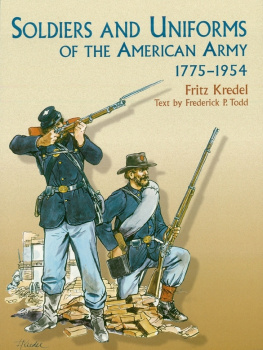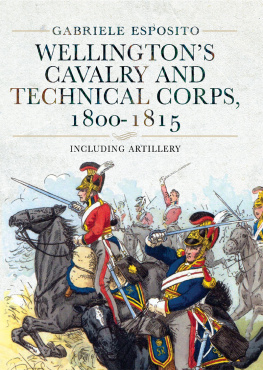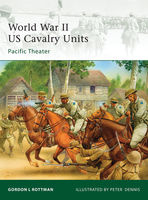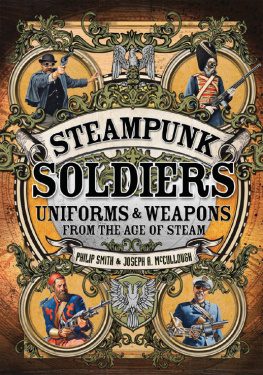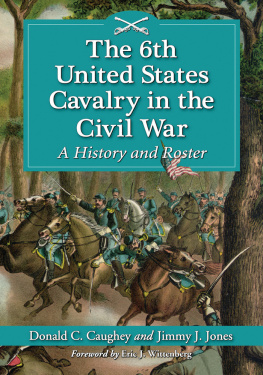BRITISH ARMY UNIFORMS
FROM 1751 TO 1783
Including the Seven Years War and the American War of Independence
INCLUDING BOTH CAVALRY AND INFANTRY
AN ILLUSTRATED GUIDE TO
UNIFORMS, FACINGS AND LACE
A fully illustrated account of the uniforms and distinctions of each
numbered regiment of cavalry and infantry in the British Army
with a full and complete list of regimental facings, lace and
distinctions including the tartans of the highland regiments
C.E. FRANKLIN
To Barbara and Lindsey and all those without whose help this book could not have been written
First published in Great Britain in 2012 and
reprinted in this format in 2016 by
Pen & Sword Books Ltd
47 Church Street
Barnsley
South Yorkshire
S70 2AS
Page design by C.E. Franklin
Copyright C.E. Franklin, 2016
ISBN 978 1 47388 666 7
eISBN 978 1 78346 140 0
Mobi ISBN 978 1 78340 776 7
The right of C.E. Franklin to be identified as Author of this work has been asserted by him in accordance with the Copyright, Designs and Patents Act 1988.
A CIP catalogue record for this book is available from the British Library.
All rights reserved. No part of this book may bereproduced or transmitted in any form or by any means, electronic or mechanical including photocopying, recording or by any information storage and retrieval system, without permission from the Publisher in writing.
Pen & Sword Books Ltd incorporates the Imprints of Pen & Sword Aviation, Pen & Sword Family History, Pen & Sword Maritime, Pen & Sword Military, Pen & Sword Discovery, Wharncliffe Local History, Wharncliffe True Crime, Wharncliffe Transport, Pen & Sword Select, Pen & Sword Military Classics, Leo Cooper, The Praetorian Press, Remember When, Seaforth Publishing and Frontline Publishing
For a complete list of Pen & Sword titles please contact
PEN & SWORD BOOKS LIMITED
47 Church Street, Barnsley, South Yorkshire, S70 2AS, England
E-mail:
Preface
To enable the reader to grasp fully the changes that occurred during the eighteenth century, George I ruled from 1714 to 1727, George II from 1727 to 1760 and George III, from1760 until 1820. When the Seven Years War ended in 1763 the British standing army was subject to severe reductions. The Foot Guards had three regiments but the infantry of the line was reduced to seventy, and the cavalry fared little better with the number of regiments reduced to eighteen. This book illustrates and identifies the different uniforms of the numbered regiments of cavalry and infantry within the British Army during 1751, 1768 and the end of the War of Independence in 1783. Named but un-numbered regiments or foreign regiments in British pay and the regiments especially recruited for service in the colonies, loyalist regiments or the veteran or Garrison , have not been included. In each case the uniform is shown for a man of a nominal stature and five feet nine inches tall.
The uniforms of the Army uniforms of 1751 are taken from the Morier Paintings, to these have been added the uniforms after 1768 up to 1783. The 1751 paintings by Morier are used by the courtesy of The Royal Collection 2009, Her Majesty Queen Elizabeth II, show in detail the regimental uniforms of the Army. These purport to show those regiments in the Army at this time; there is some discussion regarding this and many feel that they are not truly representative and may have been drawn over a longer time-scale.
The American War of Independence
Earlier incidents had begun to ferment dissatisfaction but it is considered by many that armed conflict began at Lexington and Concord on 19 April 1775. On 4 July 1776 the Second Continental Congress adopted a Declaration of Independence formally declaring the American War of Independence. Congress formally declared an end to hostilities in April 1783, with the final Peace Treaty being signed on 3 September 1783. During this period the British Army increased in size to thirty-three regiments of cavalry and one hundred and five regiments of infantry. The numbers of British Army regiments during the period varied considerably. It peaked about 1783 when there were, apart from Household troops, nineteen numbered regiments of heavy cavalry and twelve of cavalry. The infantry similarly rose to include the three regiments of Foot Guards and one hundred and five regiments of Foot, but many of these higher numbered regiments only existed for a very short time and most had been disbanded by 1783. Most of the infantry regiments were allocated a county or area title in 1782, this ostensibly being the area from which the regiment drew recruits, although this was often not the case.
The exact nature of the dress of a unit at any one time is difficult to resolve as there were no official dress regulations published before 1833, just a random series of orders and individual regulations published by Horse Guards, most of which are recorded in the papers of the National Archives. There are the contemporary illustrations of the period and these, with those known extant examples, have been consulted during the preparation of this study. It may be that other regulations and items exist in private hands, but those in the public domain have been consulted. In some of the regimental illustrations, hat plates, breast plates and buttons have been included; these are selected examples to give a feel for the type and style and do not attempt to record the changes in pattern for any particular regiment throughout the period.
Provision of the uniforms for the other ranks was the responsibility of the Colonel of the regiment. Colonels arranged for manufacture and supply according to the laid down pattern, or their whim, on repayment from the Treasury and regimental variations were common. Officers purchased their own uniforms, usually following the practice and tradition of the regiment rather than regulations and it must also be remembered that it was the practice of officers, to adopt whatever variations of dress they considered the colonel would allow. It is quite clear that, whatever the regulations prescribed, the personnel serving in North America and abroad were often dressed in a manner contrary to the current regulations and, in most cases, the significant factors were regimental practice, the size of the purse, being dressed la mode and, in many cases, what was available.


